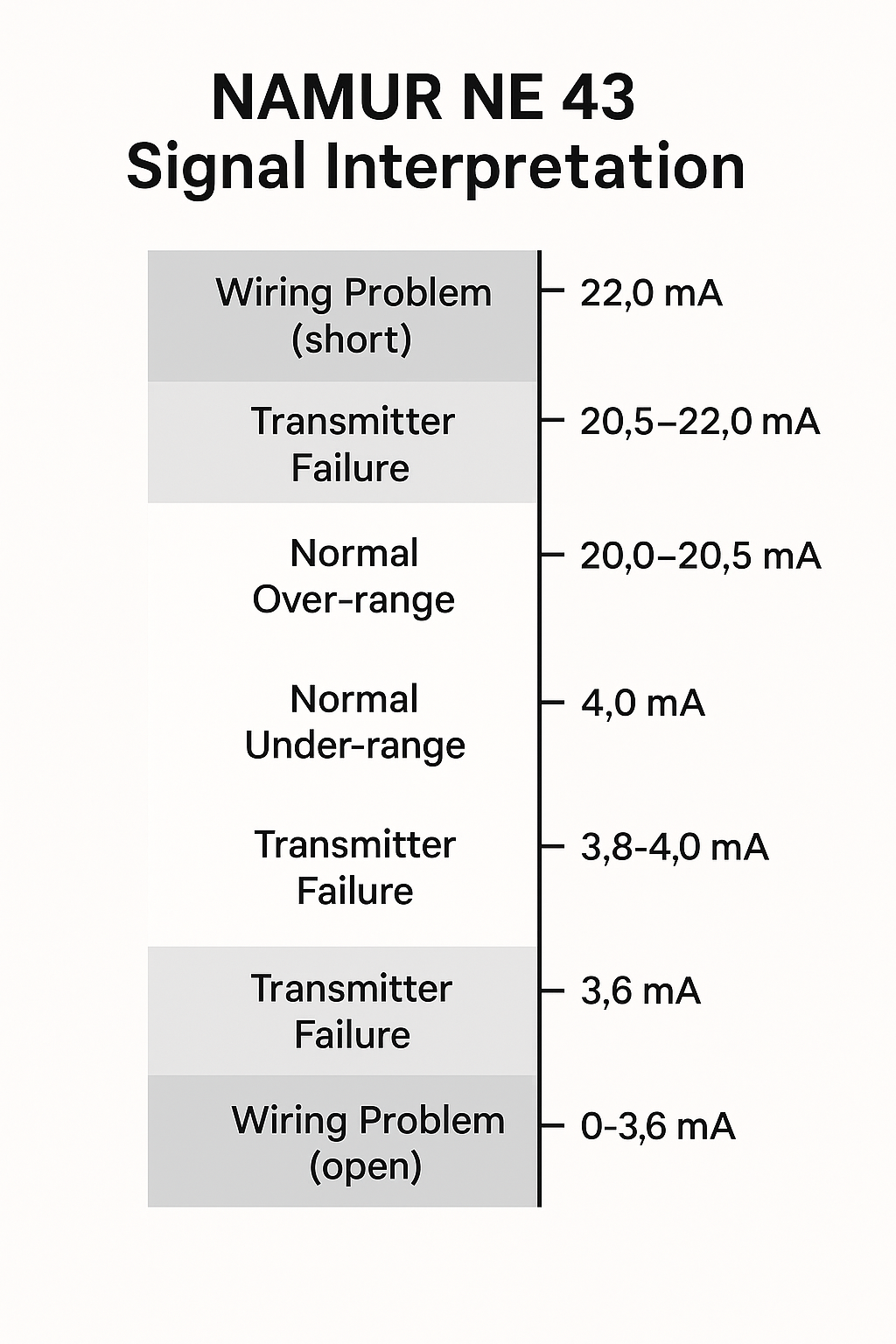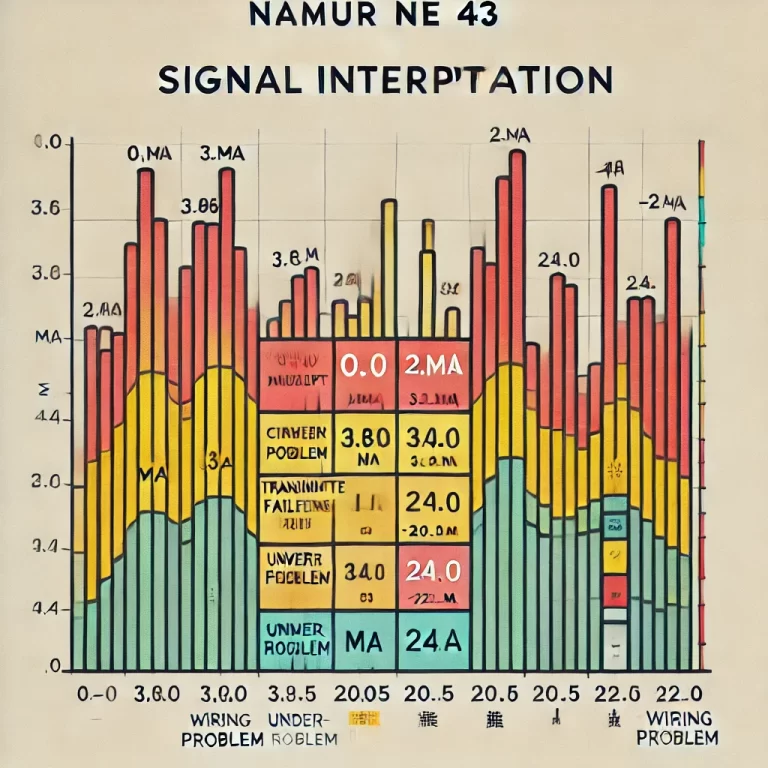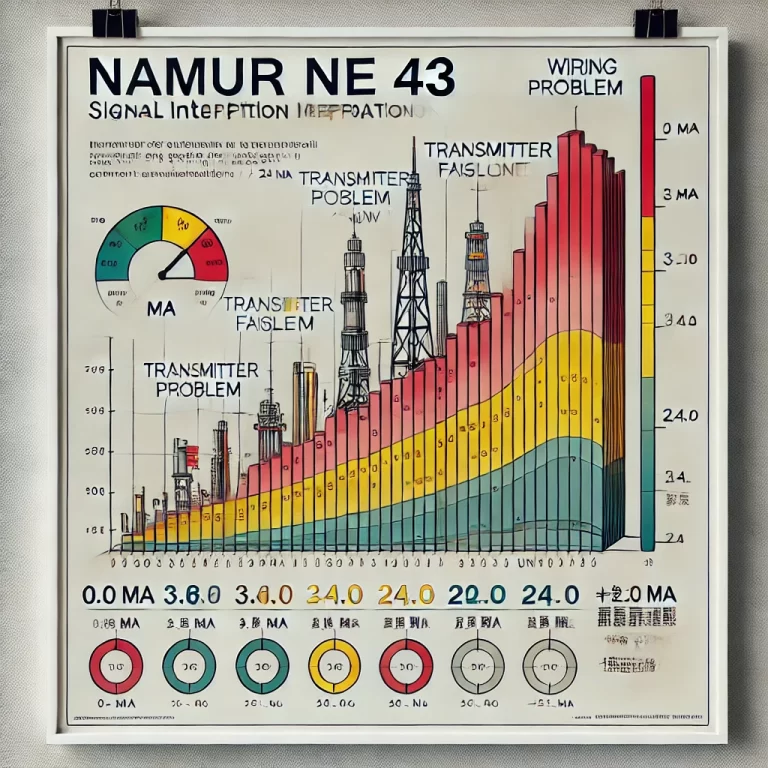1. Introduction
In the field of industrial automation, ensuring equipment reliability and early fault detection is essential to maintaining system safety and minimizing downtime. To address this, the NAMUR organization (User Association of Automation Technology in Process Industries, Germany) published NE 43, a guideline that defines how process instruments should signal failure conditions using standardized analog outputs.
As part of the widely adopted 4–20 mA analog signal transmission system, NAMUR NE 43 provides a clear framework for interpreting abnormal values, enabling efficient fault diagnostics and responsive maintenance strategies.
2. Background and Development of NAMUR NE 43
The NE 43 recommendation emerged in the 1990s in response to growing demands for intelligent diagnostics in increasingly complex industrial environments. Traditional diagnostic methods struggled to provide early and reliable fault warnings.
To solve this, NAMUR introduced a standardized signal coding scheme within the 4–20 mA range. By assigning specific current values to indicate normal operation, sensor faults, and wiring issues, NE 43 empowers operators to quickly identify and respond to failures before they escalate.

3. Key Functions and Signal Definitions
NAMUR NE 43 defines the status of a field instrument based on its output current. The following table outlines the meaning of different current ranges:
| Current Output (mA) | Status Description |
|---|---|
| 0 – 3.6 | Wiring problem (open circuit) |
| 3.6 – 3.8 | Transmitter failure (low) |
| 3.8 – 4.0 | Under-range (below normal span) |
| 4.0 – 20.0 | Normal operating range |
| 20.0 – 20.5 | Over-range (above normal span) |
| 20.5 – 22.0 | Transmitter failure (high) |
| > 22.0 | Wiring problem (short circuit) |
Advantages:
Fault Detection: The system can distinguish between minor over/under-range signals and serious transmitter or wiring failures.
Predictive Maintenance: Operators can pinpoint the fault type quickly, reducing unnecessary downtime.
System Safety: Early detection allows alarms to trigger before failures cause hazardous conditions.

4. Application Examples
4.1 Pressure Transmitters
In process plants, pressure transmitters are used to monitor vessel or pipeline pressures. A working device outputs between 4–20 mA depending on the measured pressure.
If the sensor is damaged or disconnected, the signal may drop below 3.6 mA, triggering a maintenance alert per NE 43.
4.2 Temperature Transmitters
Temperature transmitters convert thermal measurements into analog signals. Within the configured range, output stays within 4–20 mA.
If the temperature exceeds the sensor’s capability or a fault occurs, the signal may rise above 20.5 mA (or fall below 3.6 mA), signaling the control system to act accordingly.
5. Benefits of Implementing NAMUR NE 43
Standardization Across Devices: Vendors follow the same output conventions, improving interoperability across systems.
Improved Maintenance Planning: NE 43 eliminates ambiguity in fault status, allowing technicians to diagnose problems faster.
Enhanced Fault Response: Alarm systems integrated with NE 43 can instantly inform operators about critical failures, reducing the risk of production downtime or safety incidents.

6. Conclusion
NAMUR NE 43 is a foundational standard for signal integrity and fault diagnostics in modern process automation. By providing a standardized method to indicate device failures through analog signals, it enhances reliability, safety, and maintenance efficiency.
Integrating NE 43-compliant transmitters into your control systems not only streamlines device compatibility but also ensures faster fault response—leading to more stable and cost-effective operations.
If you are looking for field instruments that comply with NE 43 or need help selecting the right sensors for your application, feel free to contact our technical team.
